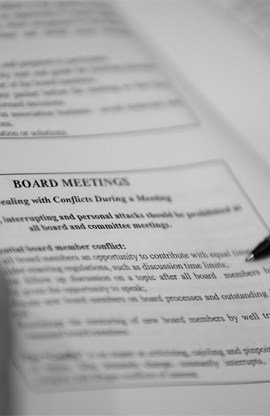If you’re a Baby Boomer serving on your community association’s board of directors, you may have already begun noticing a shift in the characteristics and tendencies of your neighbors (and maybe even your fellow board members). Don’t call me, just email or text. Can I pay those assessments online? Our community needs to “go green”! Do we have a Facebook page?
These are just a few of the comments and questions you may have heard from the younger generation of Millennials within your community.
Defining the Generations (all age ranges and numbers are estimates)
- Baby Boomers are the demographic born roughly between the mid 1940s thru the mid 1960s and make up approximately 76 million or 24% of the U.S. population. One of the defining characteristics of Baby Boomers is a strong work ethic.
- Generation X are the demographic born roughly between the mid 1960s thru the late 1970s and make up approximately 41 million or 13% of the U.S. population. One of the defining characteristics of Gen Xers is entrepreneurship.
- Millennials are the demographic born roughly between the late 1970s and mid 1990s and make up approximately 71 million or 22% of the U.S. population. One of the defining characteristics of Millennials is an affinity for technology.
Whether you’re ready or not, community associations need to start preparing for a generational shift. Over the next 10 years, Millennials will likely overtake Baby Boomers in terms of home ownership percentage. As a result, community associations will begin to change to reflect the attitudes/wants/needs/personalities of their members. So how can your community association “Bridge the Generational Gap”?
The following list, although far from exhaustive, are a few useful tips to help your community bridge the gap:
- The literal “bridge” between the Baby Boomers and the Millennials is Generation X. Gen X’ers within your association may prove a useful resource in relating to the both younger and older community members.
- Seek input and participation from representatives of each group. Even if your board does not include a particular generational representative, make an effort to include members of each group in community activities and the community decision making process.
- The “Notice” conundrum. Many of our clients, especially those with younger board members, are eager to shift towards electronic notices, voting, etc. Although this can be convenient for most, the Association needs to careful that (1) they are complying with the Governing Documents and applicable Arizona law; and (2) that the minority (those who do not use computers or email) are still accounted for, i.e. hard copies are not yet a thing of the past.
- Plan Ahead. For larger initiatives that appeal to Millennials, such as “Green” initiatives or electric car parking, the community will need to take a longer term approach to ensure that such initiatives have the support of the community and are budgeted for appropriately.
- Delegate Wisely. If members of the community are eager for a stronger online presence, appoint a computer savvy Millennial to head a social medial campaign.
- Understand and embrace the generational differences in your community. A “my way or the highway” attitude will almost never result in a positive outcome.
